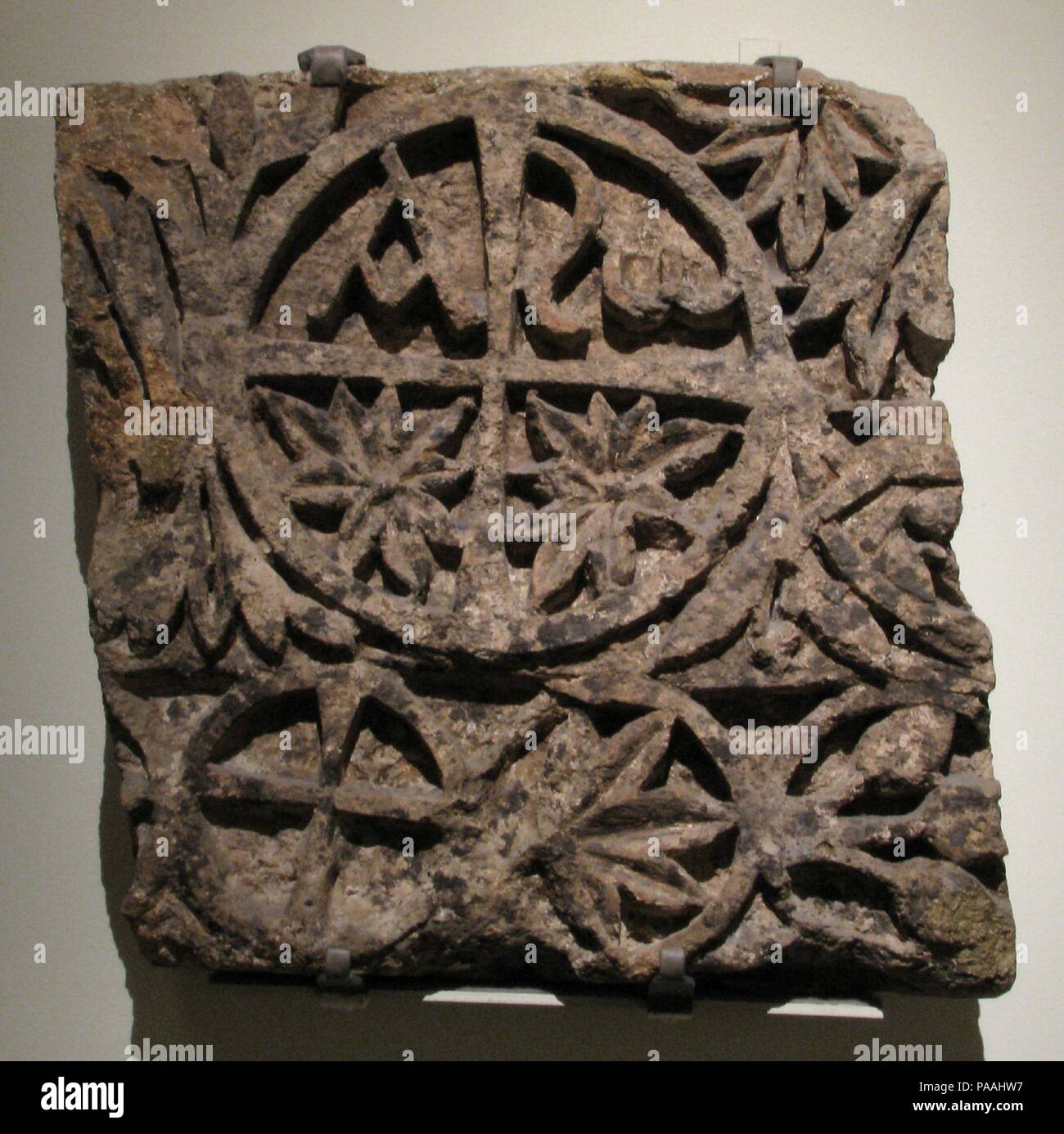Fragment of a Lintel. Culture: Byzantine. Dimensions: Overall: 20 x 19 1/2 x 7in. (50.8 x 49.5 x 17.8cm). Date: 400-550. The deeply carved decoration on this fragment resembles that on the door and window frames of early monumental churches in Syria. The symbol that divides the central roundel was understood as both a cross and a Christogram, the monogram for Christ's name formed from the first two letters of his name in Greek, chi (X) and rho (r). The alpha (A) and omega (w) that flank the cross, the first and last letters of the Greek alphabet, were widely used by Christians as symbols of t

Image details
Contributor:
Album / Alamy Stock PhotoImage ID:
PAAHW7File size:
18.4 MB (740.3 KB Compressed download)Releases:
Model - no | Property - noDo I need a release?Dimensions:
2536 x 2530 px | 21.5 x 21.4 cm | 8.5 x 8.4 inches | 300dpiPhotographer:
AlbumMore information:
This image could have imperfections as it’s either historical or reportage.
Fragment of a Lintel. Culture: Byzantine. Dimensions: Overall: 20 x 19 1/2 x 7in. (50.8 x 49.5 x 17.8cm). Date: 400-550. The deeply carved decoration on this fragment resembles that on the door and window frames of early monumental churches in Syria. The symbol that divides the central roundel was understood as both a cross and a Christogram, the monogram for Christ's name formed from the first two letters of his name in Greek, chi (X) and rho (r). The alpha (A) and omega (w) that flank the cross, the first and last letters of the Greek alphabet, were widely used by Christians as symbols of the eternal nature of God. Their use was inspired by John the Evangelist's vision on the isle of Patmos (Revelation 1:8): "I am the Alpha and the Omega, says the Lord God, who is and who was and who is to come, the Almighty.". Museum: Metropolitan Museum of Art, New York, USA.